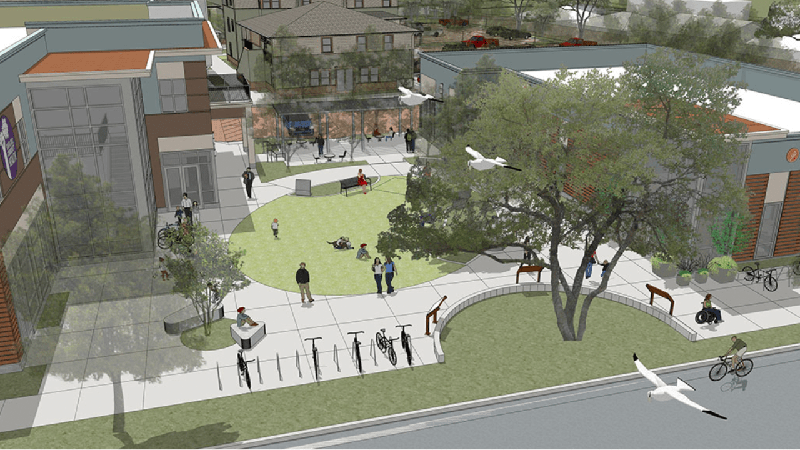
An affordable housing complex being built in Santa Cruz County. Courtesy Wald, Ruhnke & Dost Architects
By FRED KEELEY
There is a solution to California’s low-income and very low-income housing crisis, and it can be launched this week.
What will it take? It will require Gov. Newsom and the California Legislature doing what they have been running on for years: Going really big on low income housing. Spending 40% of the State’s $97 billion budget surplus on it, now.
California voters approved a $4 billion housing bond four years ago, and Gov. Newsom and the Legislature have spent that and a few billion more, as they should, on this massive problem. Some actions have not been so helpful, such as SB 9 and 10, which rely on the invisible hand of the market to somehow reduce housing prices, which it will not do any time soon.
Now, the State of California has a nearly $100 billion General Fund surplus, as announced by Governor Newsom’s Department of Finance in mid-May. Legislators and the governor are working overtime to spend that money, including lots of augmentations to existing department budgets and boosting the state’s “rainy day funds.”
The State of California’s Department of Housing and Community Development has determined that 983,000 very low and low- income affordable housing units are needed in the planning period 2023-2031. Affordable housing developers will tell you that $150-250K per unit subsidy, minimum, is needed to construct such units.
A real solution would be to allocate $40 billion of the surplus to an affordable housing account to subsidize the building of very low and low-income housing units over the next eight years. Non-profit housing developers would apply for subsidies to construct units that would not otherwise be built. Local jurisdictions who want to get the job done, will have funding to close the cost gap for 200,000 low and very low income units. An amount of affordable housing that California has never before been able to so much as dream about until this moment.
This would eliminate local governments' reason for not reaching RHNA goals: There is no money to do so. (By the way, this is not some dodgy excuse. It is entirely legitimate, because many years ago the voters took away 60 percent of local governments’ property taxes, and the state took an additional $1.7 billion per year away from local governments in order to balance the state budget a few years ago.)
Cities and counties now comply with state law by planning, zoning, and adopting housing elements to their general plans for such housing, but not much more than that is being achieved statewide. The affordable housing that is currently being built nearly always requires density bonuses and other concessions that can result in unintended consequences for everyone.
The governor and the legislature can make a giant leap forward on this vexing issue by allocating $40 billion of the $97 billion surplus for the most needed housing, and still have nearly $60 billion for wildfire prevention, climate change, K-12 education and other important issues.
In the absence of taking this historic step to achieve sufficient amounts of very low and low income housing, Sacramento would be wise to place a $40 billion General Obligation bond on the November statewide ballot for the identical purpose. Such bonds do NOT raise taxes, as repayment has first claim on California’s General Fund in building the State budget.
This is the moment to match words and deeds. And the money is here.
Fred Keeley served for 24 years in public office. He was a county supervisor, county treasurer, and state Assembly Member. He currently teaches in the graduate program of public administration at San Jose State University and at the Panetta Institute. Mr. Keeley is a board member of Housing Santa Cruz County. He is expected to announce next month that he is running for the office of mayor in the City of Santa Cruz.
Long form articles which explain how something works, or provide context or background information about a current issue or topic.